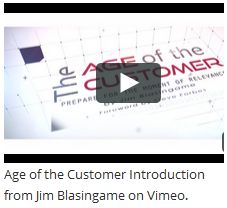 As many of you know, for almost 19 years I’ve conducted over 1,000 live interviews annually on my radio program, The Small Business Advocate Show. I get to ask four really smart people a lot of questions. But occasionally the tables are turned are turned on me, like when Alignable.com podcaster, Alan Belniak, asked me several questions about small business on his show. I thought you’d be interested in that interchange.
As many of you know, for almost 19 years I’ve conducted over 1,000 live interviews annually on my radio program, The Small Business Advocate Show. I get to ask four really smart people a lot of questions. But occasionally the tables are turned are turned on me, like when Alignable.com podcaster, Alan Belniak, asked me several questions about small business on his show. I thought you’d be interested in that interchange.
Belniak: What’s the biggest problem small business owners don’t know they have?
Blasingame: Too many business owners don’t realize that their customers’ expectations are changing faster than ever before. If you want to find out what your business should be doing tomorrow or next year, that information is inside the heads of your prospects and customers. Ask them.
Belniak: What advice do you have for small business owners in order to make a successful new hire?
Blasingame: Focus on the 3Ps: Be more patient, professional and proactive. Don’t make a hiring mistake by rushing to fill a slot. Use professional methods and practices to increase your chances of making a successful hire. Be more proactive by grooming employees to step up to a key assignment, so that you’re hiring for the lower position.
Belniak: What advice can you give to those who are seeking funding?
Blasingame: Strategy and forecasting. Create a capitalization strategy that includes multiple capital sources and terms. Don’t use operating cash for long-term capital expenses. Don’t finance something you can lease. Don’t use investors when you should get a bank loan. Use an electronic spreadsheet to create a 12-month cash flow projection so you can forecast beginning and ending cash. This will make you smarter and your banker happier.
Belniak: What is one way that operating a business today is the same as 15 years ago, and one way it’s different?
Blasingame: It’s Old School fundamentals and New School tech. Old School: The fundamentals never change: you still have to buy low, sell high and keep good records; cash is still King; people still want to be treated well. New School is the digital elements, and most is good news: Small businesses have handy cool and affordable tools available, but it’s not good news if you’re not keeping up. You don’t have to win the digital race, but you do have to participate.
Belniak: What are some of the character traits common among successful entrepreneurs?
Blasingame: You have to have a high tolerance for risk. If you don’t, clock in tomorrow. You have to believe in yourself. Many days all other elements of your business will let you down. If you can’t believe in yourself, there will be days when you won’t come back. You have to love working. You’ll never work harder than when you own a business. If you don’t love working, clock in tomorrow.
Belniak: What’s one thing you see small business owners failing to do?
Blasingame: They fail to set aside time at least every week to stop being a manager and assume the role of the CEO. Fire yourself from jobs you no longer have to do and promote yourself to jobs that a growing company needs someone to perform, but that only you can do.
Write this on a rock … Being successful in small business isn’t complicated, but the degree of difficulty is hard to explain.












